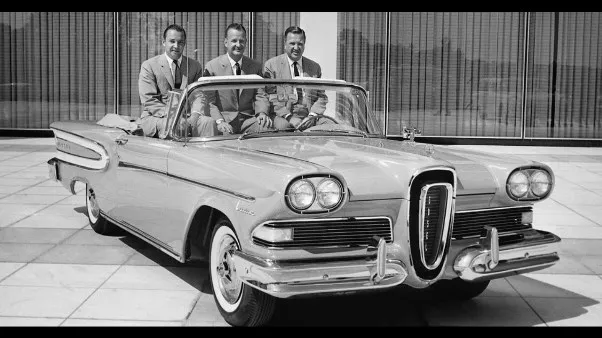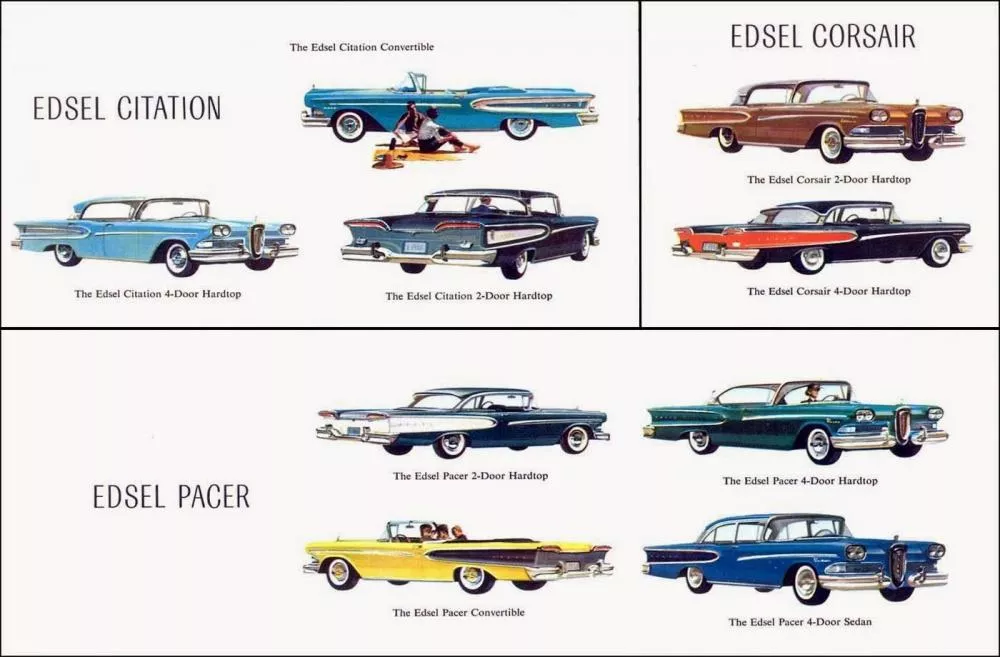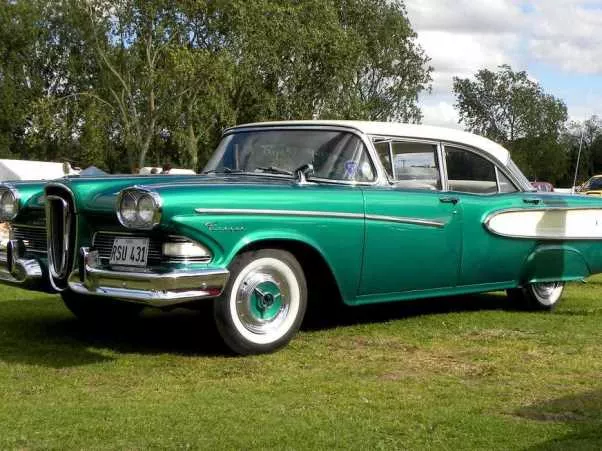It’s practically a cliché by now, but Filipinos are fond of bandying around an oft-repeated mantra: “The customer is always right”. Business decisions strive to favor those with the power of the purse. We have various feedback mechanisms such as surveys, polls and focus groups in order to find out how products and services can be made incrementally better to an increasingly larger group of people.
This especially applies to automobiles, and the automotive industry in general. Filipinos are particularly keen on spending hard-earned money towards something that they feel will give them the most returns in terms of value. Any carmaker worth its wheels will take the time and effort to research what the market looks for at a particular price point, both to entice new customers and to reinforce brand loyalty among their existing ones.
That’s why it’s hard to believe there was a time when a known auto manufacturer decided to go against what the market wanted, resulting in a product that would be remembered for mostly the wrong reasons: the Ford Edsel, a shining example of how not to do business, especially when it came to cars.
How it started
Back in the 1950s, Ford Motor Company was ranked #2 among carmakers in the US, but despite this position, it was apparently losing too many customers to General Motors in terms of trade-ups. Car owners who owned a regular Ford and wanted to move up to a higher-spec model either bought an Oldsmobile or a Buick; Mercury, which was all Ford had to offer in the upper range at the time, was completely ignored.
Ford Executives hatched a plan to create an entirely new line of cars for the upmarket consumer, particularly targeting young executives or professional families on their way up. They proclaimed it would the first in a new line of cars since the Mercury’s debut in 1938, and earmarked $250 million for the ambitious project.

Given how cars with horizontal grilles were seemingly commonplace at the time, Ford wanted the Edsel to stand out visually
Marketing research and development began in 1955 under the codename E car, or “experimental car”. The advertising firm Foote, Cone & Belding came up with over 6,000 names, including Corsair, Citation, Pacer and Ranger (these would ultimately be used to name the different variants under the new series). Some of the more unorthodox names proposed were Pastelogram, Resilient Bullet and Utopian Turtletop. Eventually, Ford decided on the name Edsel, after the company’s former President and son of Founder Henry Ford (interestingly, Edsel’s eldest son and then-company President Henry II opposed it, saying that he did not want his father’s good name to be spinning around on thousands of hubcaps).
The styling was next. Given how cars with horizontal grilles were seemingly commonplace at the time, Ford wanted the Edsel to stand out visually. Project chief designer Roy Brown Jr. originally imagined a slender vertical opening for the front, but concerns by engineers over engine cooling resulted in a circular shape. Then, Ford chairman Ernest Breech wanted the grille to be taller and wider. The resulting design would come to be known as the “horsecollar” or “toilet seat” grille.
In terms of interior amenities, the Edsel offered a rolling-dome speedometer that glowed red when the car reached a certain speed; warning lights for low oil level, engine overheat and parking brakes; ergonomic driver controls; self-adjusting brakes; seatbelts as standard and child-proof rear door locks. One notable feature of the Ford Edsel was the push-button Teletouch gearshift selector on the steering wheel hub, which means that the driver pressed on the center of the steering wheel when shifting gears, although a column-mounted automatic shifter option was also available.
Ford hired David Wallace, a marketing expert, to flesh out the Edsel’s personality. His market studies and consumer polls focused on what impressed people about a car, not necessarily what they would buy. One critic pointed out that the survey omitted questions on utility such as sticker price, cost of operation and maintenance, whether it would fit people’s garages and so on, as if cars were anything other than functional means of transportation. The survey answers themselves were frequently ignored in favor of standard decision-making techniques; that is, company executives had the final say.
In terms of selling the Edsel, Ford wanted exclusive dealers, believing that the model will sell better if the Edsel was all that a dealer had to offer in the showroom. Grabbing the chance to become among the first to sell the Edsel to consumers, more than 500 dealers ditched their current stocks and loaded up on Edsel units. Each of them supposedly had to pay over $100,000 (in 1957 currency), confident that Ford was behind the project 100%; in some cases, they hadn’t even seen the car, taking delivery of Edsels still wrapped under tarps. Magazine teaser advertisements were no better, showed little more than a picture of the Edsel taken with a highly-blurred lens.
The Edsel is revealed
After a largely secretive marketing campaign, Ford unveiled the Edsel on September 4, 1957 for the 1958 model year. In the first week, Edsel showrooms were teeming with potential customers eager to get their first good glimpse at Ford’s new car.
Four submodels of the Edsel were made available for the 1958 model year: the Citation, available in two-door/four-door hardtop and two-door convertible versions; the Corsair, sold as a two-door/four-door hardtop; the Pacer, which came as a two-door/four-door hardtop, four-door sedan or two-door convertible; and the Ranger, built as either a two-door/four-door hardtop or sedan.
For the most part, the Ford Edsel was criticized over various flaws, most notably after being test-driven by Consumer Reports magazine: contrary to Ford’s claim that the Edsel was an all-new Ford car, it utilized components from the 1957 Ford and Mercury models, and the similarities were apparent visually. Cramped interior dimensions were compared to those on the 1957 Ford Fairlane. The brakes were the same as those found in smaller Ford models, even though the Edsel was considerably heavier than its stablemates.
Even the location of the gearshift selector was panned from a practicality and safety standpoint, since it required the driver to glance away from the road just to shift into the proper gear. Probably the only thing that could be praised on the Edsel was that it had good acceleration.
A month into the launch, sales hadn’t picked up. An hour-long television special titled The Edsel Show was aired in October to help promote the car, but it did little to win over customers who were turned off by the car’s styling and high price. By November, some dealers were reportedly going bankrupt. Many dealers started bringing back other models when it became apparent that the Edsel wasn’t selling.
Ford had tried to mitigate declining sales by offering the Edsel to state and highway officials at huge discounts, to give the car some road respectability. They offered rebates to dealers, even raised the Edsel’s advertising budget by a record $20 million. In its first year, the Edsel sold more than 68,000 units in the US and Canada. Sales continued to dwindle in the following model years, despite the changes Ford had made to the Edsel lineup.
Finally, in November 19, 1959, Ford announced the end of the Edsel program, with production wrapping up by the end of the month. The next day, it was reported that pre-owned Ford Edsels have devalued by as much as $400 following the announcement. Total Edsel sales were reported at approximately 116,000 units, out of 118,287 cars built. Ford lost some $350 million on the venture.
The aftermath
According to historians, several factors may have contributed to the Edsel’s commercial failure.
External styling was one, especially the grille. Poor build quality was another issue; Consumer Reports complained of noticeable squeaks and rattles that showed subpar worksmanship, especially on rough roads, and that the car’s handling was less than ideal.
The Teletouch gear selector’s location also made drivers shift gears inadvertently when they meant to sound the horn. The shifter mechanism was unpredictable and failed at times since its wires were too close to the exhaust manifold. And the boomerang-shaped taillights pointed towards the center of the car, causing confusion when a turn signal would blink left while its arrowhead pointed in the opposite direction, and vice versa.

An advertisement for some of the many variations of the Ford Edsel
Being a new brand, the Edsel did not possess the same customer base as the well-established brands such as Oldsmobile, Buick and Pontiac. Worse, it had to compete with sister division Mercury for sales. And mechanics were largely unfamiliar with the Edsel’s 410 cu.in. E-475 engine, which did away with distinct combustion chambers. Although the powerful engine provided brisk acceleration, it returned poor fuel economy by 1957 standards.
The Edsel’s sticker price didn’t help, as the line was priced at $2,484 for the base model Ranger ($73 higher than the top-spec Ford Fairlane 500) and up to $3,390 for the mid-range Corsair, more expensive than the equivalent Mercury model. Consumers didn’t understand whether the Edsel was supposed to be a step up from the Mercury or below it, and many of them left the dealerships after seeing the car’s price tag.
Reliability was also a major concern; the March 1958 issue of Popular Mechanics magazine reported that 16% of Edsel owners had complaints ranging from faulty welding to power steering failure. The magazine itself found a leaking trunk in its test unit, and an inaccurate odometer. Ford never built dedicated manufacturing facilities for the Edsel, instead sandwiching it between Ford and Mercury assembly lines; this made it hard for workers to produce the cars at a set quota since they had to switch tools and parts bins. As a result, quality control suffered, and many Edsels left the assembly floor unfinished.
One important factor that Ford failed into account, which had nothing to do with the car’s design or engineering, was the economic recession during the third quarter of that year. Prior to this period, in 1955 medium-priced offerings from Pontiac, Buick and Dodge had a combined two million units sold. But the stock market was in a downturn by the fall of 1957, right when Ford launched the Edsel; people were increasingly interested in economy cars, and something like the Edsel was seen as too big and expensive to maintain.
According to car news, a month after the Edsel was launched, the Soviet Union successfully launched Sputnik into space. This supposedly became an embarrassment to the US, leading many Americans to see opulent new cars as symbols of a misguided national priority. As a result, American culture briefly shifted its focus to academics and practicality.
Ford hastily rebranded the incoming 1960 Edsel Comet as just the Comet, in an effort to shield it from the fallout of the Edsel line. Although certain design elements were carried over from the Edsel such as the instrument cluster, rear tailfins and taillights, the Comet was marketed as a standalone product, and successfully sold more units in its first year than the Edsel ever did in its 3-year run.
It’s important to note that the Edsel wasn’t a complete dud, as many of the “impractical” features it introduced like self-adjusting brakes and steering wheel gear selectors are now found in sports cars. And many other car manufacturers such as Lancia, Subaru, BMW and Saab have successfully used the vertical grille on their own models.
Lessons learned
The Edsel saga was a study in the power of marketing that has been either misused or altogether ignored, as explained by Microsoft founder and philanthropist Bill Gates in his blog. "Although the Edsel was supposed to be advertised, and otherwise promoted, strictly on the basis of preferences expressed in polls, some old-fashioned snake-oil selling methods, intuitive rather than scientific, crept in".
Research took a back seat to corporate egos, which wanted the Edsel to become everything to everybody at once. Ford famously held two media previews for the Edsel back in 1957 – one for male reporters and one for their wives, with the cars driven around a stunt course with the former and paraded around in a fashion show with the latter.

The Edsel has new life today as a collector's item
Another thing was that there were no contingencies on the Edsel project. An entire Edsel division (with no dedicated assembly lines) and exclusive Edsel dealerships made a recipe for failure, since there were no safety nets.
Today, we have the benefit of consumer feedback in guiding carmakers as to which offerings would be best received by their target markets. Even legislation has stepped in with the passage of the Anti-Lemon Law, ensuring that consumers get their money’s worth in terms of performance, reliability and overall value. Local automakers are certainly stepping up their game with their respective lineups.
As for Ford, thankfully it has emerged wiser and stronger from that chapter in its history, going on to churn out automotive legends such as the Mustang, the Lincoln Continental and the SVT Raptor. As long as the lessons of the Edsel are always present in the rear-view mirror, not just for Ford but all automakers in general, it will be easier to move forward on the road ahead.
>>> Click here for more updated cars and concepts in the world
Know more about Ford

As of 2023, Ford Philippines has a total of 10 models. This includes the Ford EcoSport subcompact crossover, the Territory compact crossover, the Explorer midsize crossover, the Everest midsize SUV, the Expedition fullsize suv, the Ranger and Ranger Raptor midsize pickup trucks, the F-150 fullsize pickup truck, the Transit van, and the Mustang sports coupe.
Besides the updated Ford price list Philippines 2023, Philkotse also hosts a list of the hottest car promos for the said brand. This includes low monthly payment promos, low downpayment promos, and cash discount promos.
Recent posts
- Ford Philippines Ranger Raptor premium care program Sep 09, 2020
- Ford Ranger Wildtrak X Aug 28, 2020
- Ford Philippines price List 2025 Mar 03, 2023
- Ford Territory crossover SUV soon Oct 14, 2020














